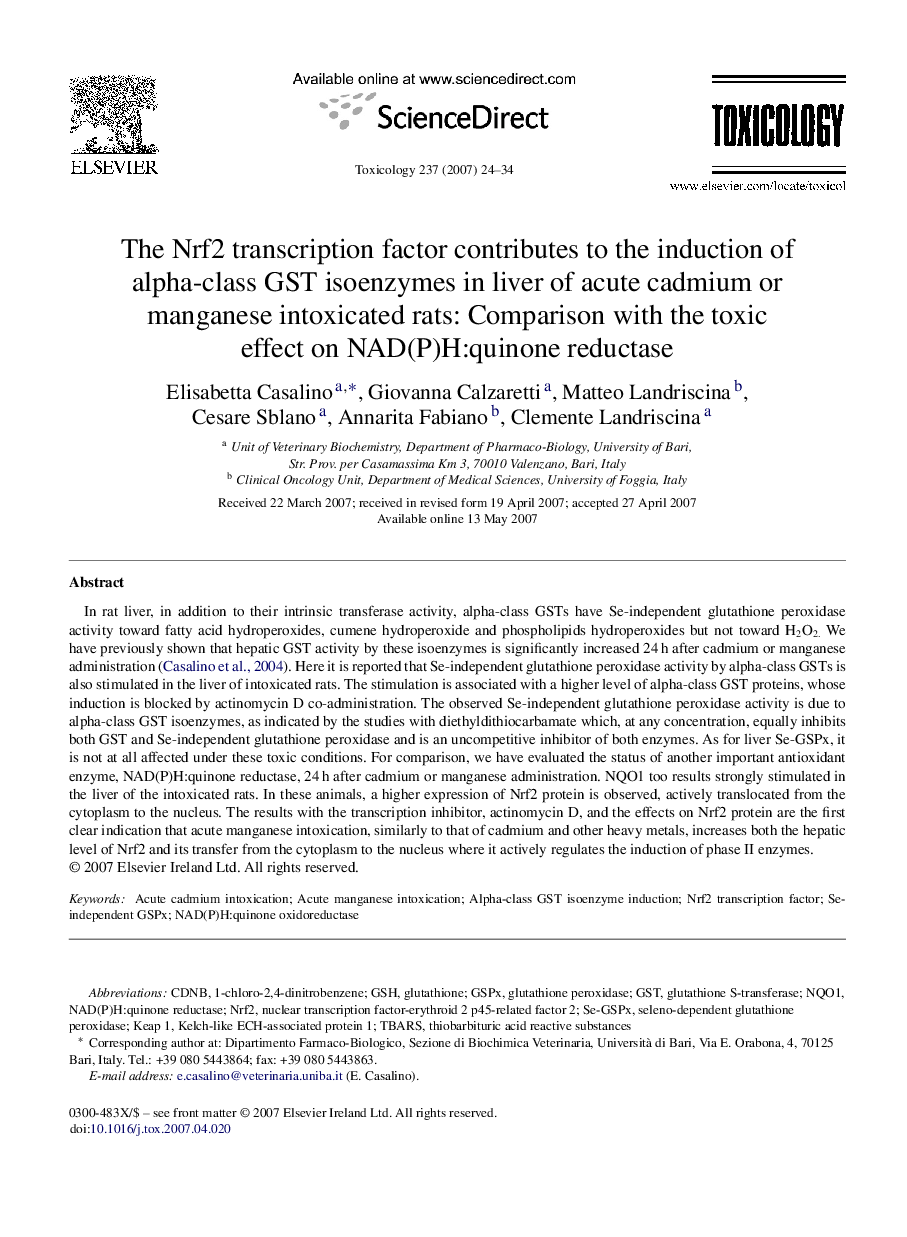| کد مقاله | کد نشریه | سال انتشار | مقاله انگلیسی | نسخه تمام متن |
|---|---|---|---|---|
| 2597740 | 1562419 | 2007 | 11 صفحه PDF | دانلود رایگان |

In rat liver, in addition to their intrinsic transferase activity, alpha-class GSTs have Se-independent glutathione peroxidase activity toward fatty acid hydroperoxides, cumene hydroperoxide and phospholipids hydroperoxides but not toward H2O2. We have previously shown that hepatic GST activity by these isoenzymes is significantly increased 24 h after cadmium or manganese administration (Casalino et al., 2004). Here it is reported that Se-independent glutathione peroxidase activity by alpha-class GSTs is also stimulated in the liver of intoxicated rats. The stimulation is associated with a higher level of alpha-class GST proteins, whose induction is blocked by actinomycin D co-administration. The observed Se-independent glutathione peroxidase activity is due to alpha-class GST isoenzymes, as indicated by the studies with diethyldithiocarbamate which, at any concentration, equally inhibits both GST and Se-independent glutathione peroxidase and is an uncompetitive inhibitor of both enzymes. As for liver Se-GSPx, it is not at all affected under these toxic conditions. For comparison, we have evaluated the status of another important antioxidant enzyme, NAD(P)H:quinone reductase, 24 h after cadmium or manganese administration. NQO1 too results strongly stimulated in the liver of the intoxicated rats. In these animals, a higher expression of Nrf2 protein is observed, actively translocated from the cytoplasm to the nucleus. The results with the transcription inhibitor, actinomycin D, and the effects on Nrf2 protein are the first clear indication that acute manganese intoxication, similarly to that of cadmium and other heavy metals, increases both the hepatic level of Nrf2 and its transfer from the cytoplasm to the nucleus where it actively regulates the induction of phase II enzymes.
Journal: Toxicology - Volume 237, Issues 1–3, 31 July 2007, Pages 24–34